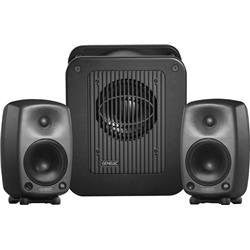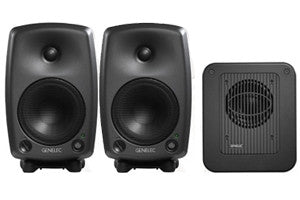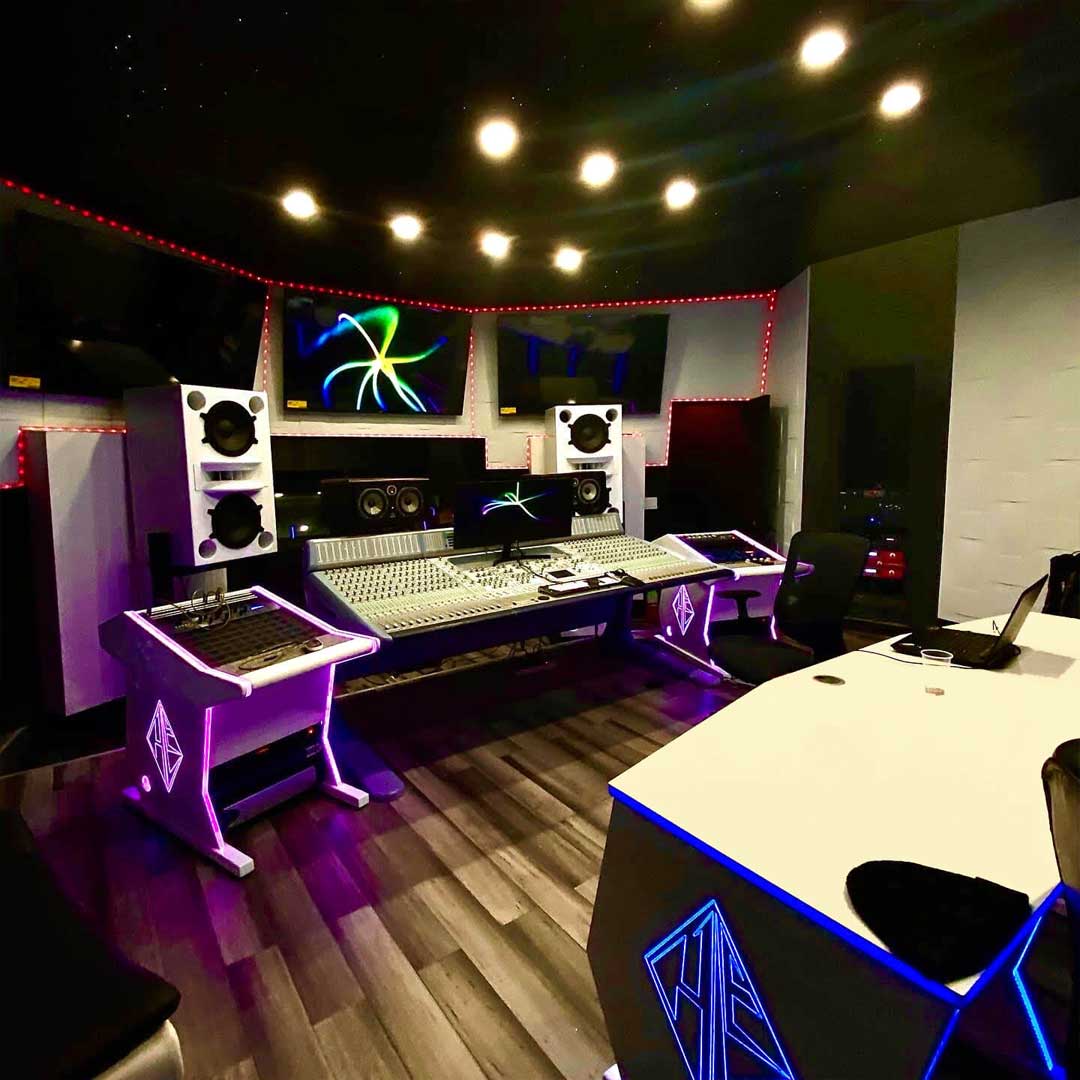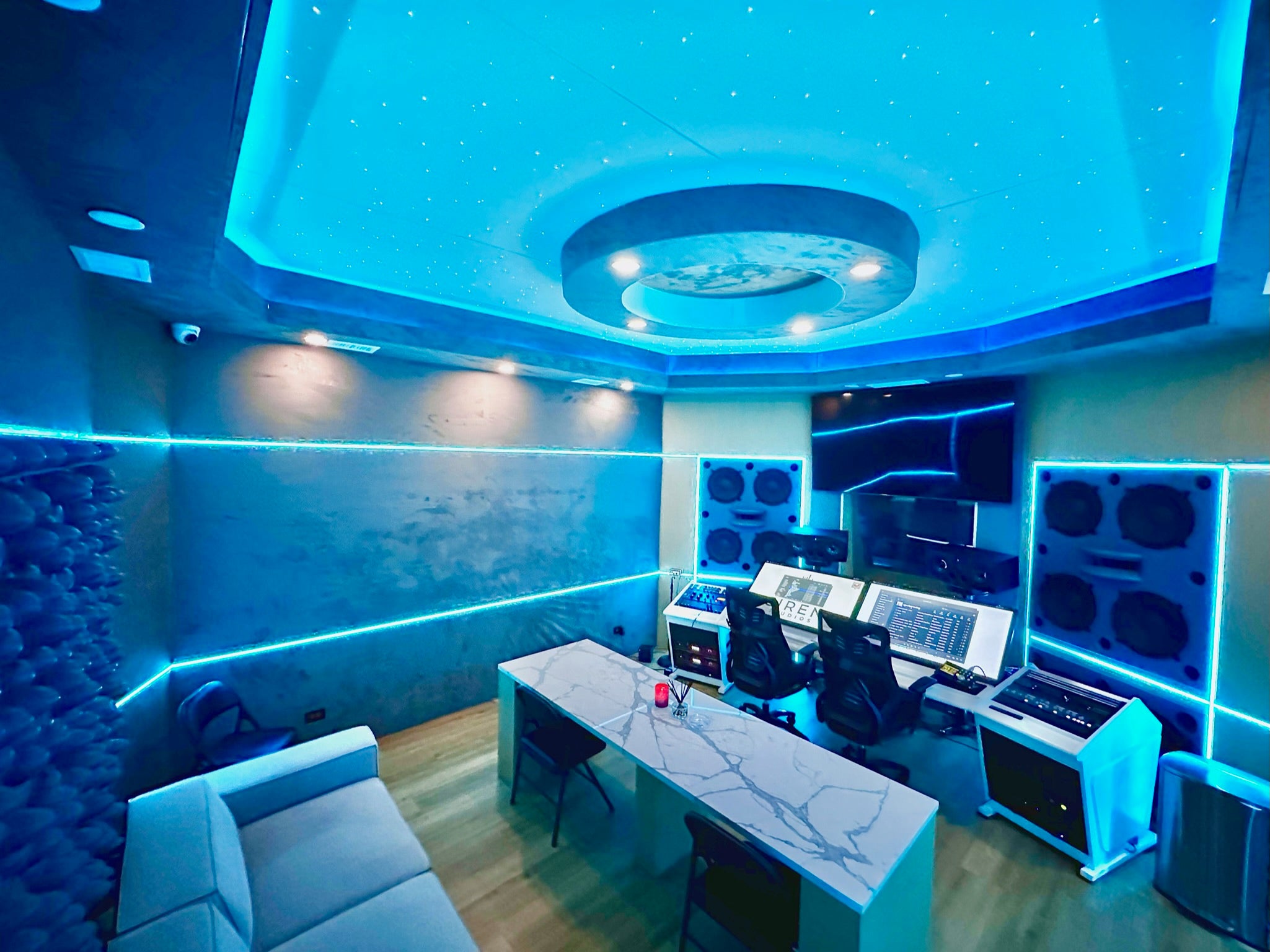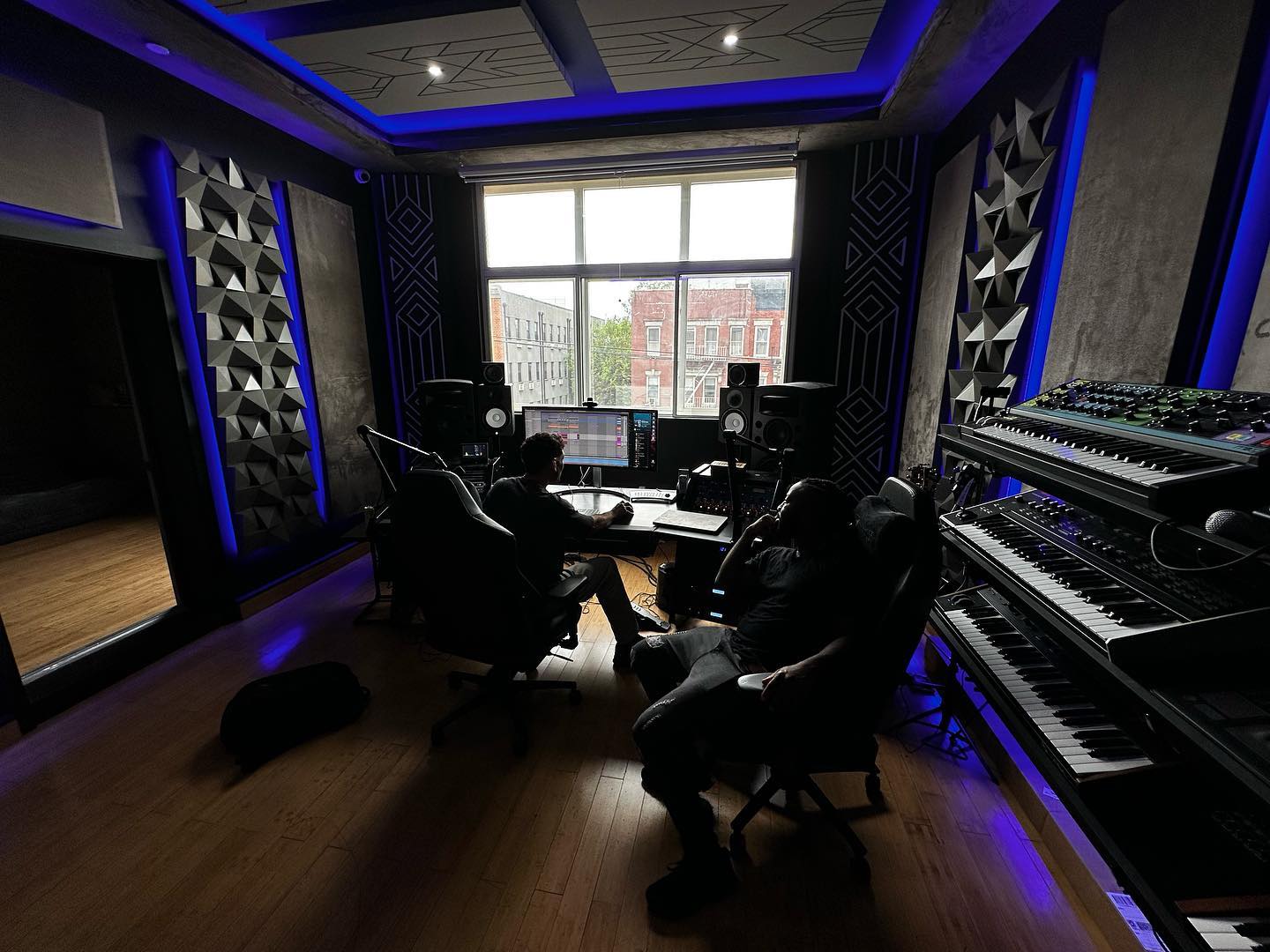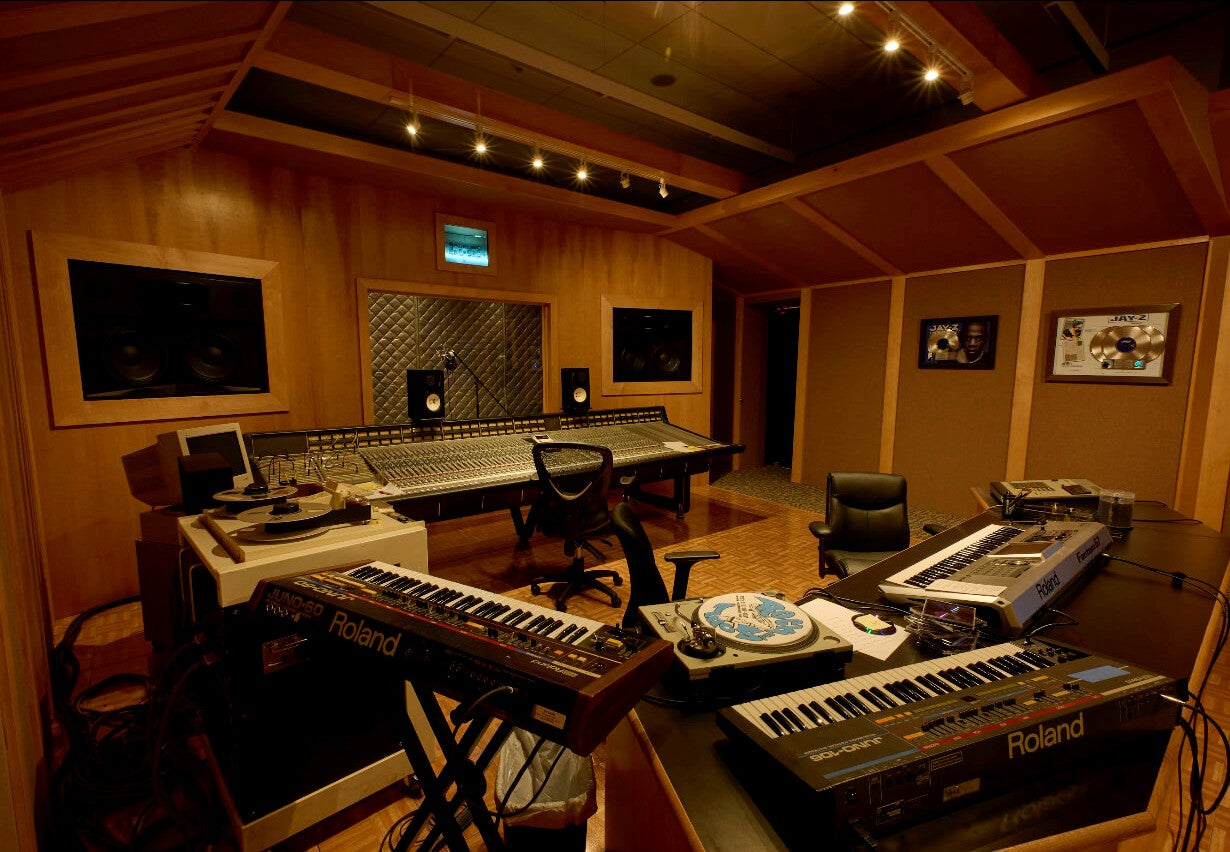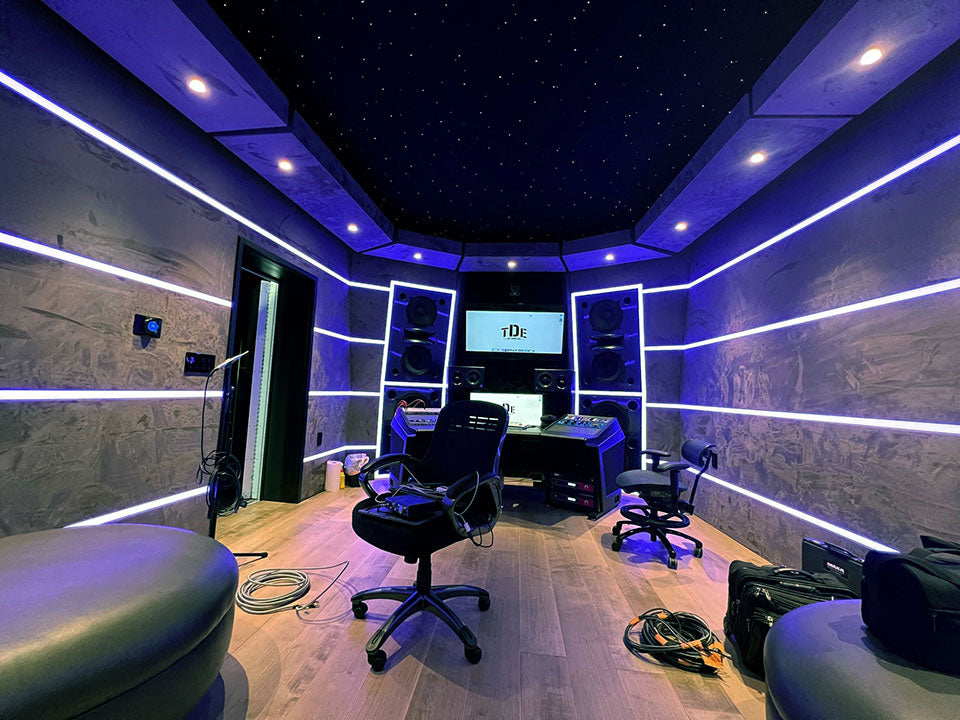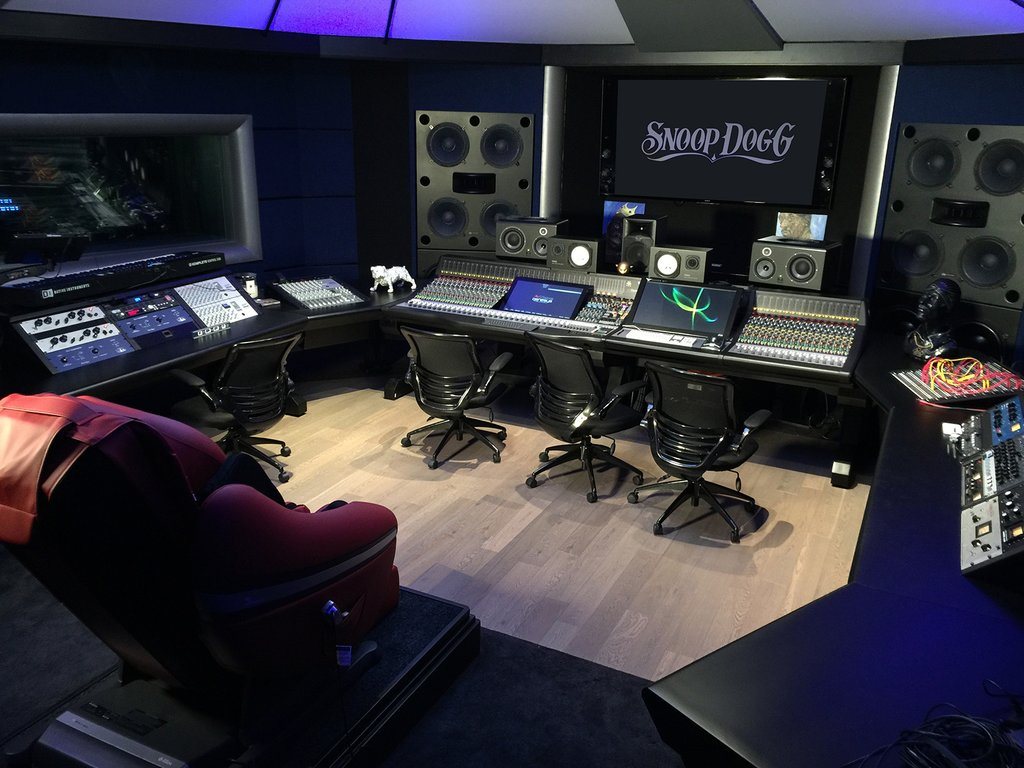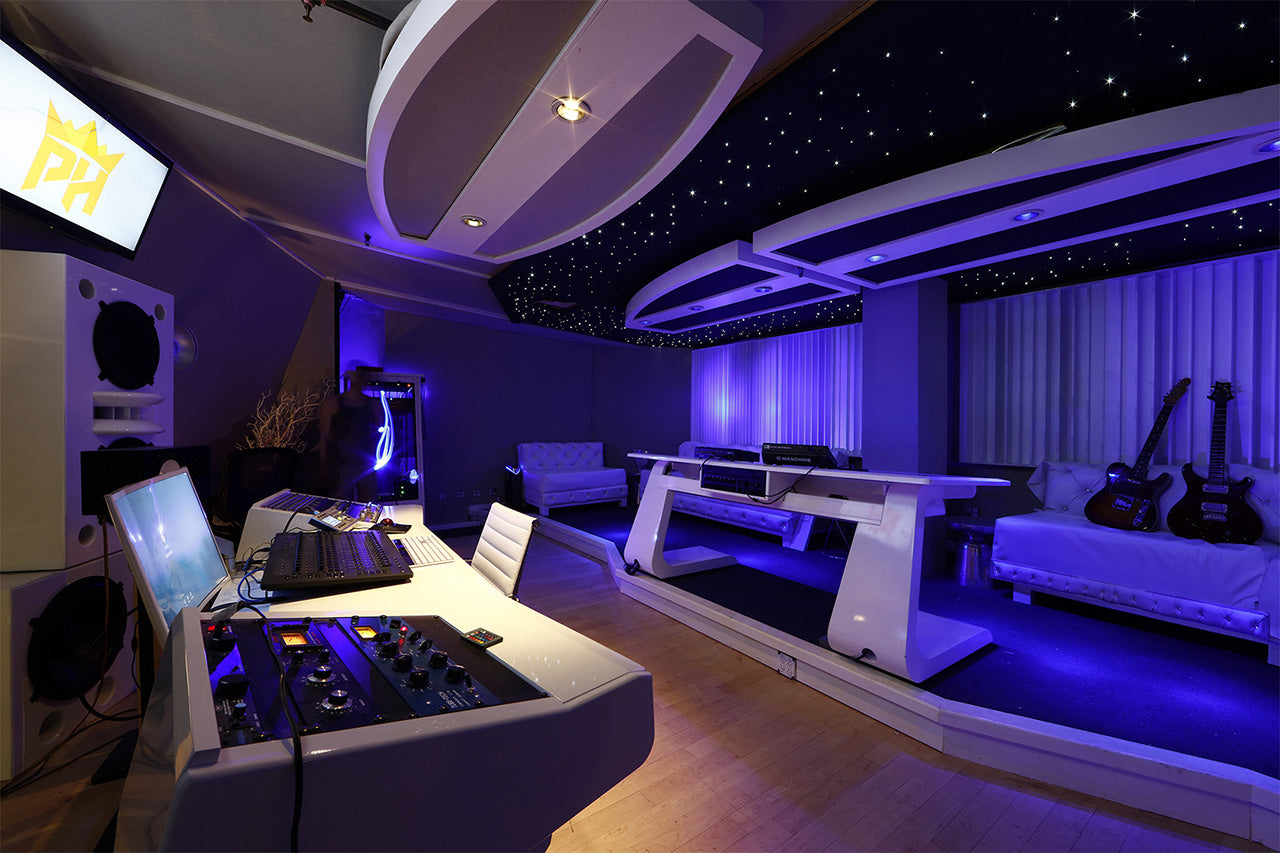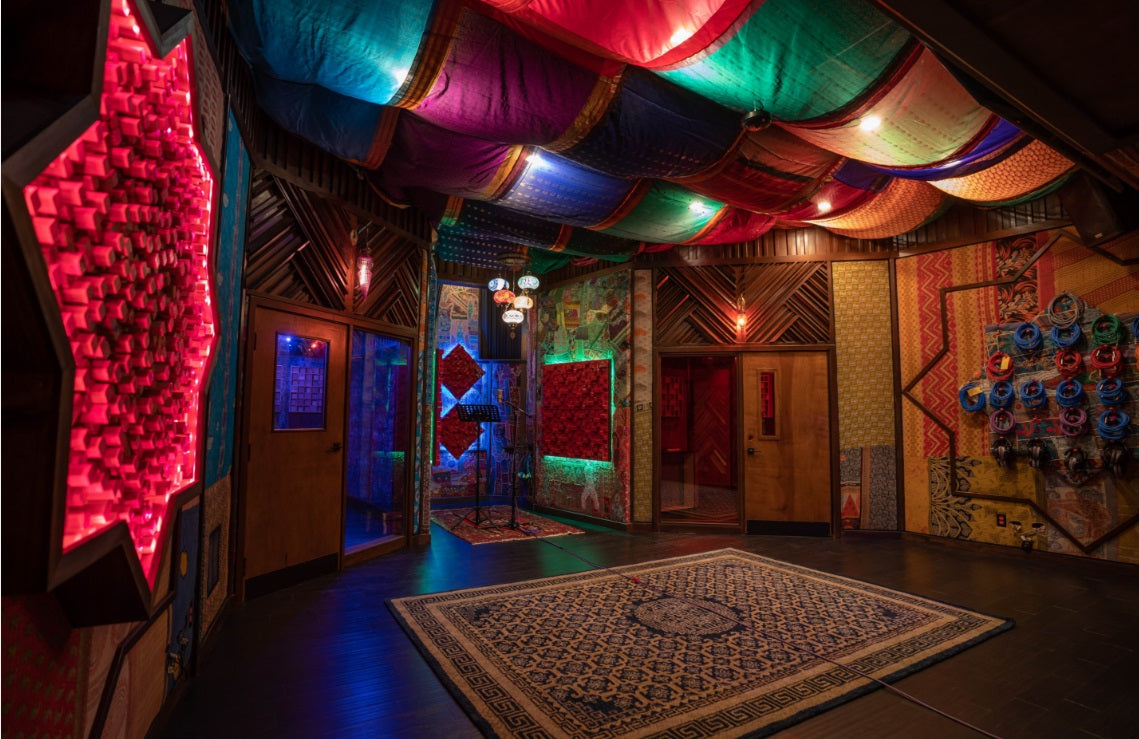Genelec 8030.LSE Triple Play
The Genelec 8030.LSE Triple Play is a 2.1 stereo/subwoofer system with two 5", 50W LF/50W HF bi-amplified 8030C powered monitors and one 8", 70W 7050B subwoofer*.
Trying to mix with small monitors alone is like looking at the world through a screen, or a window with the shades mostly drawn. 5" speakers can handle the midrange on up quite effectively, but when it comes to what's happening below 120Hz, the shades are mostly drawn - that's where the Genelec 8030.LSE Triple Play comes in. With a pair of 8030C active monitors and a 7050B subwoofer, the Triple Play 2.1 system throws the shades on your sonic window wide open giving you a view of the big picture. This compact yet powerful 2.1 system ideal for project and home studios, workstations, installations, surround sound monitoring, or if you want to hear studio quality in your home theater.
Genelec 8030.LSE Triple Play unique features:
- Stereo pair of 100W, 5" 8030 bi-amplified active monitors with room compensation EQ, directivity waveguide, auto power saving, and Iso-Pod™ stands
- One 8" 7050B subwoofer with 70W optimized Class D power amp, bass management, LFE channel, room-response EQ, and 6 x 5 XLR I/O (5 + LFE in, 5 out)
Genelec 8030C
The Genelec 8030C, the latest iteration of the 8030 bi-amped studio monitor, is as friendly to the environment as it is to your ears - well almost since Genelec's prime directive is sound quality above all else. With 50 watts to both low- and high-frequency driver the 8030C now outputs 4dB higher SPL than the 8030B, giving you a more powerful performance with no compromise to sound quality. The 8030C achieves these stunning results with several proprietary Genelec technologies, including the rigid all-aluminum Minimum Diffraction Enclosure (MDE™), which enables flat frequency response and superior imaging, Directivity Control Waveguide (DCW™), which enables you to move around the sweet spot or control room with accurate frequency response, and a curved, flow-optimized bass reflex tube and maximized internal volume for a broad bass and high SPL output. Getting to the aforementioned environmental friendliness, the 8030C outputs lower wattage and features Genelec's Intelligent Signal Sensing (ISS™) circuitry, which puts it into power-saving standby mode when it detects no signal presence after a period of time (it's also nice to your electric bills as well). The 8030C has been crafted to combine exceptional power with absolute precision for use in professional and home studios, edit suites, broadcast vehicles, or surround systems.
Genelec 8030C Studio Monitor key features:
- Accurate on- and off-axis response via Directivity Control Waveguide (DCW) Curved, rigid aluminum Minimum Diffraction Enclosure (MDE) eliminates comb filtering from cabinet reflections
- Quiet, high air-flow reflex port design
- Room-response compensation EQ
- Optimized and highly efficient class D amplifiers
- Active crossovers
- Driver-protection circuitry
- Intelligent Signal Sensing (ISS) power-saving technology
- Iso-Pod decoupling and speaker orientation stand
- Versatile mounting options
Genelec 7050B Subwoofer
The Genelec 7050B subwoofer is designed to fill a small space with a lot of bass. A professional-level piece of kit, the 7050B is designed to complement the 8020 and 8030 monitors in both stereo and 5.1 surround. With five main inputs and an LFE channel, the 7050B has a selectable 85Hz/120 Hz bandwidth. Irrespective of its relatively diminutive dimension, its low-frequency extension down to 25Hz, while Genelec's Laminar Spiral Enclosure (LSE™) ensures unwavering precision and enhanced, color-free low-end capacity. Don't let its small size fool you, the Genelec 7050B subwoofer is an undeniably powerful, professional choice for studio, film post, surround, or home theater.
*The Genelec 7050B was in production between 2005 and 2018. It was replaced by the 7050C.
Genelec 7050B key features:
- 8" bass driver with 100dB SPL output
- 70-watt Class-D amplifier
- Laminar Spiral Enclosure (LSE™) Technology
- Room-response compensation equalizer
- Bass management system
- Protection circuitry
- Active crossovers
Genelec 8030C/7050B-Under the Hood
Directivity Control Waveguide (DCW) Technology
Genelec's Directivity Control Waveguide shapes the emitted wavefront of direct radiating multi-way monitors in a way that allows predictable tailoring of the speaker's dispersion pattern. DCW technology also minimizes early reflections, providing a wide, controlled listening area with accurate sound reproduction both on- and off-axis.
Another advantage of minimized early reflections and controlled constant directivity is that the frequency balance of the room's reverberation field is essentially the same as the direct field from the monitors. As a result, the monitor's performance is less affected by room acoustic characteristics.
The consistent off-axis frequency response of the waveguide enables engineers to move in and out of the sweet spot without losing perspective while working room.
DCW technology key benefits:
- Flat on- and off-axis response for wider usable listening area
- Increased direct-to-reflected sound ratio for reduced control room coloration
- Improved stereo and soundstage imaging
- Increased drive unit sensitivity up to 6dB
- Increased system maximum sound pressure level capacity
- Decreased drive unit distortion
- Reduced cabinet edge diffraction
- Reduced complete system distortion
Minimum Diffraction Enclosure (MDE™) Technology
Genelec's highly innovative aluminum enclosure (MDE) improves the linearity of the frequency range and power response of free-standing monitors via rounded edges and gently curved front and sides optimized to match the acoustic properties of the drivers. In addition to achieving a remarkably flat frequency response, minimizing cabinet diffraction yields superb sound stage imaging.
Directivity is further improved by the waveguide being integrated into the MDE enclosure. Since the low-frequency limit for constant directivity is determined by the size of the waveguide, the larger the surface the better the control. Highly directional off-axis radiation yields a consistent listening window, which is critically important in multichannel monitoring. Controlled directivity also reduces possible first-order reflections on surfaces near the loudspeaker, such as walls, floors, ceilings, and studio furniture, which contributes to consistent audio reproduction in various acoustical environments.
High air-flow bass reflex port design
There are three methods to handle bass frequencies in small monitors, infinite baffle, or sealed cabinet, ported reflex, and transmission line (passive radiator designs are a subset of ported reflex speakers). Genelec's choice for vented, or reflex, enclosures dates back to the first Genelec product in 1978. Since then Genelec has refined and improved their designs to increase low-frequency extension and sound pressure level capability to provide outstanding bass articulation and definition.
The downside of ported designs is that turbulence in the ports due to extreme air pressure from the driver excursions can cause chuffing noise in the ports, and/or interfere with frequencies higher up in the spectrum. To minimize air speed and turbulence, the cross-sectional area of the vent should be large. This, in turn, means that the vent tube has to be long, which presents quite a design challenge. Genelec's solution is a long, curved tube that maximizes airflow so deep bass can be reproduced without compression. The reflex tube terminates with a wide flare located on the rear of the enclosure minimizing port noise and providing excellent bass articulation.
The curvature of the tube has also been carefully designed to minimize any audible noise, compression, or distortion. The inner end of the tube has proper resistive termination to minimize audible chuffing noise and air turbulence. Proper reflex port design allows also to significantly reduce the woofer's displacement, improving the linear low-frequency output capacity.
PAD Pro tech note: For small cabinets to handle bass frequencies lower than the laws of physics would allow, the ported or reflex is the easiest design from a manufacturing standpoint to achieve a deep bass response. It takes advantage of the cabinet's resonance and in essence feeds sound coming from the rear of the speaker through a tube connected to the back of the cabinet into ports, which are usually on the front panel. The length and diameter of the tube are precisely calculated for the desired low-frequency response. The trick is to make sure the sound coming from the port is in phase with the speaker, which reinforces the low frequencies of the monitor. It's important to note that while this technique does provide a better bass response in small cabinets, it's primarily a psychoacoustic effect. The addition of a subwoofer enables smaller drivers to handle midrange frequencies while bass frequencies are directed to a larger dedicated bass driver.
Intelligent Signal Sensing function
Genelec's Intelligent Signal Sensing (ISS) is a power-saving feature that prolongs the service life of the monitor. ISS reduces power consumption to less than 0.5 watts by automatically switching the active monitor to standby when no audio signal has been detected for some time. When playback begins, the mode indicator light on the loudspeaker lights up and the playback resumes after a slight delay (<2 seconds).
Protection circuitry
The protection circuitry prevents driver failure by detecting signal levels and responding accordingly. In the case of sudden peaks or levels that are too high for long periods, the protection circuitry reduces signal level automatically. This feature does not affect the sound quality in any way when working within the specifications of the loudspeaker, but only prevents inappropriate input signals from breaking the loudspeaker.
Protection circuitry features and benefits:
- Reduces the output level when required (e.g. when driver voice coil temperature reaches the safe limit), which highly improves system reliability
- Appropriate protection circuitry design for each loudspeaker and subwoofer maximizes system output level
Room compensation controls
Each room changes the monitor's response in a unique way, e.g. reflective vs. damped rooms, or placement against a wall vs. on a stand away from the walls. All Genelec loudspeaker systems feature room response adjustments to compensate for the room influences and retrieve a flat frequency response at the listening position. Frequency response can be adjusted to match the acoustic environment by setting the tone control switches on the rear panel of all Genelec monitors.
Optimized amplifiers with active crossover
In a typical 2-way loudspeaker system, the active crossover needs two power amplifiers; one for the woofer and one for the tweeter. Electronic crossovers split the audio signal into separate frequency bands that can be separately routed to individual power amplifiers optimized for the frequency band of their respective transducers.
The power amplifiers are connected directly to the drivers of an active loudspeaker, resulting in the power amplifier's load becoming much simpler. Each driver-specific power amplifier has only a limited frequency range to amplify (the power amplifier is placed after the active crossover), which adds to the ease of design.
The active design principle offers multiple benefits:
- The power amplifiers are directly connected to the speaker drivers, maximizing the control exerted by the power amplifier's damping on the driver's voice coil, reducing the consequences of dynamic changes in the driver electrical characteristics. This may improve the transient response of the system
- There is a reduction in the power amplifier output requirement. With no energy lost in the passive crossover filter components, the amplifier power output requirements are reduced considerably (by up to 1/2 in some cases) without any reduction in the acoustic power output of the loudspeaker system. This can reduce costs and increase audio quality and system reliability
- No loss between amplifier and driver units results in maximum acoustic efficiency
- Active technology can achieve superior sound output vs. size vs. low-frequency cut-off performance
- All loudspeakers are delivered as a factory aligned system (amplifiers, crossover electronics, and enclosure-driver systems)
Iso-Pod stand (8030C)
Often workstation furniture has equipment racks whose top surfaces double as speaker stands. While this may be a convenient option, placing speakers on wooden surfaces or console meter bridges has side effects detrimental to accurate and effective monitoring. In such a scenario, aiming the loudspeaker axis towards the listener rarely occurs, and sympathetic vibrations (which are not very sympathetic to bass) propagate from the loudspeaker to the surface. Also, first-order reflections on the surface cause comb filtering and subsequently ripples in the frequency response.
To solve these very common problems Genelec designed the Iso-Pod Isolation Positioner/De-coupler. Made from special lossy rubber-like material to de-couple the speaker from a surface, it has four shallow feet and is firmly attached to the enclosure so that it can be slid along the curved bottom or side surface to allow for a ±15° tilt of the loudspeaker. The loudspeaker's acoustical axis can then be pointed precisely towards the listener. The vibration isolation and damping properties reduce midrange coloration caused by unwanted vibration transmitted to supporting surfaces.
Versatile mounting options
On the base of the 8030 is a 3/8" UNC threaded hole which can accommodate a standard microphone stand. On the rear there are two M6x10 mm threaded holes for an Omni-mount® size 20.5 bracket.
Laminar Spiral Enclosure (LSE) - 7050B Subwoofer
An essential property of a subwoofer operating at high sound pressure levels is its capacity to move high volumes of air without distortion, which is a function of air turbulence inside the bass reflex port. This effect presents challenges to woofer and reflex port designs. Genelec's patented Laminar Spiral Enclosure (LSE) provided the solution.
By way of a little background, large air currents, such as those found in bass reflex ports, have a great deal of kinetic energy, which causes the flow to be irregular and turbulent as cross-streams perpendicular to the direction of air flow is formed. A laminar air flow is a streamline flow in which air travels smoothly in parallel layers or paths, with no interference or disruption across layers.
The Laminar Spiral Enclosure (LSE) bass reflex cabinet provides excellent laminar flow characteristics with minimal turbulence noise and enables an optimal packing of a very long reflex tube into a small space.
The 7050B's enclosure is made from a spiral-shaped strip of steel. Its purpose is to provide mechanical stability for a large amount of pressure generated inside the subwoofer. The spiral also forms the bass reflex port, enabling linear airflow even at the highest SPL output. The fact that one is part of the other means that air flow in and out of the enclosure's interior through the port is totally unrestricted. This flow-optimized construction provides extended low-frequency capacity and low distortion resulting in precise bass articulation, with measured second and third harmonic distortion levels typically better than 30dB below the fundamental. This results in an extraordinarily accurate and responsive low-frequency system.
Bass management system (7050B Subwoofer)
Bass management, from a corporate perspective, is the man's way of keeping the low frequencies down. Seriously, it's quite simply a means of directing the bass content of main and low-frequency effect (LFE) channels to the speakers that are best capable of handling them. A Bass Management system uses either analog electronic circuitry or software-based filtering to take low-frequency information from the main channels and route it to a subwoofer feed. Bass management's basic and main goal is to ensure that the entire audio bandwidth of all channels can be accurately monitored.
The bass management unit in the 7050B subwoofer splits the input into low- and high-frequency components at 85Hz. Frequencies below 85Hz are reproduced by the subwoofer. Frequencies above 85Hz are directed via the subwoofer's output connectors to the main monitors.
Bass management benefits are:
- The subwoofer extends the system frequency response down the lower limit of the audible range
- Monitor can produce a higher maximum sound level when not reproducing low frequencies
- Optimized low-frequency reproduction by selecting adequate subwoofer location; monitors can also be placed more freely
- Subwoofer's output are aligned in level and phase with monitors allowing flat and accurate reproduction down to 19 Hz and across the crossover point
- LFE channel output level (0 or +10 dB re. main channels) can be selected for accurate reproduction depending on the source type
- The ability to bypass the subwoofer allows you to evaluate the audible impact of the subwoofer
The Genelec 8030.LSE Triple Play offers small studios a powerful, full-range monitoring solution that enables accurate mix decisions. Order yours today. For more information, call or chat online with your PAD Pro.
